Crochet has been around for centuries, and while today’s patterns are often simple and modern, there’s a treasure trove of old stitches from the past that many people don’t even know exist! Some of these vintage stitches were used to create intricate, delicate designs that are now rarely seen. As crochet has evolved, many of these stitches have quietly disappeared, but they hold a special charm and beauty that’s worth exploring. Let’s take a look at some of these forgotten gems and their stories.
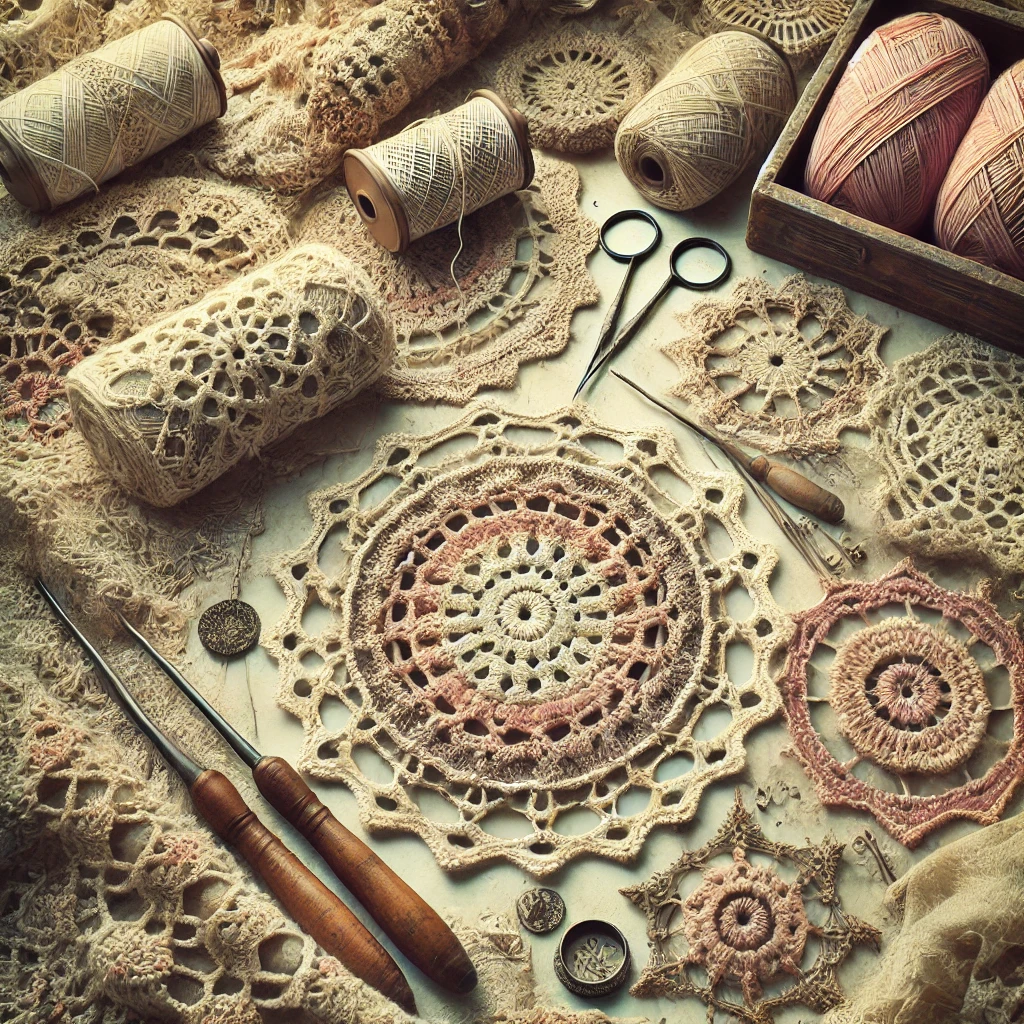
1. Shepherd’s Knitting (Knit-Crochet)
Ever tried a stitch that’s half crochet and half knitting? This is what makes Shepherd’s knitting, or “Bosnian crochet,” so interesting. It creates a dense, knit-like fabric that was used for making socks and bags, especially in colder climates. It’s a bit like working in a spiral without turning your work, and while it’s labor-intensive, it’s a wonderful blend of both crafts. Over time, crochet and knitting became more distinct from each other, and this hybrid style was mostly left behind.
2. Hairpin Lace
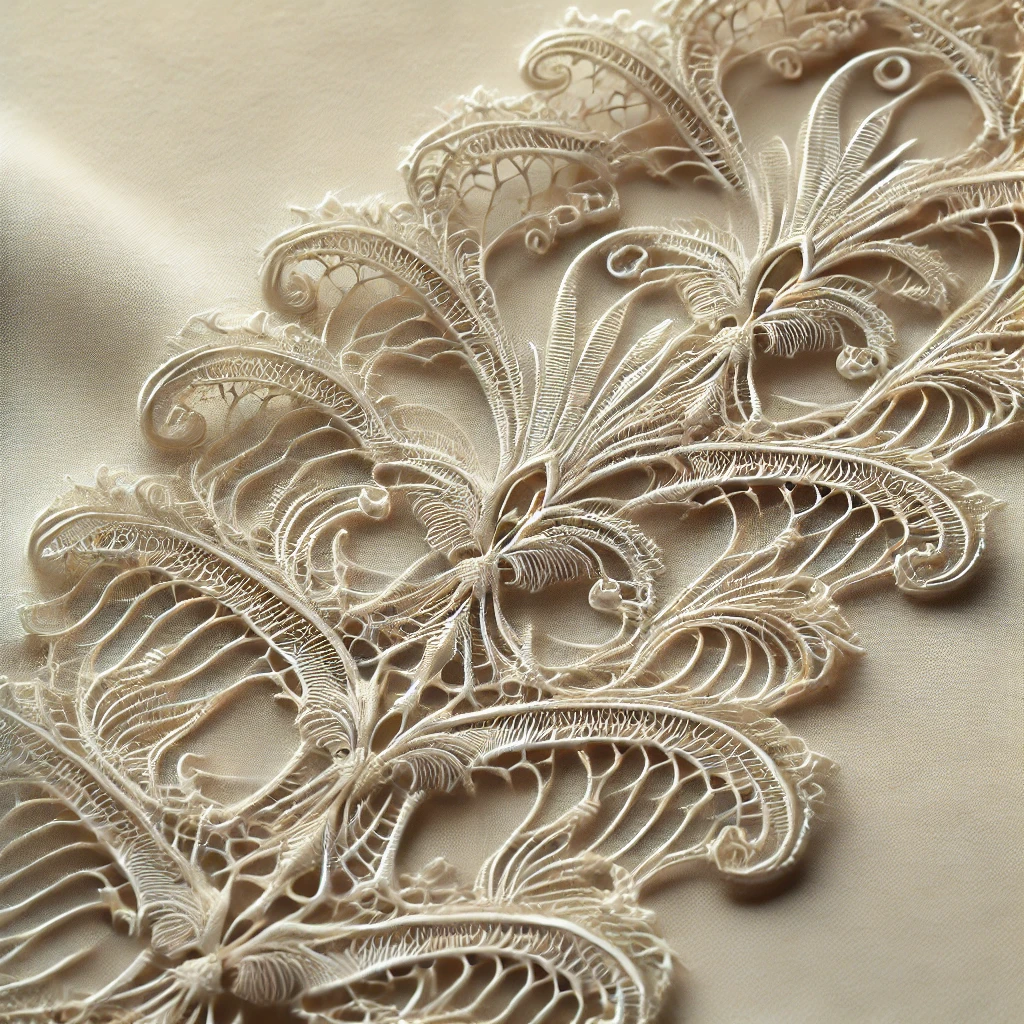
Hairpin lace is as delicate as its name sounds! It was all the rage in the Victorian era when ladies used a hairpin loom to create intricate lace for shawls, doilies, and even wedding veils. You’d crochet long strips of lace on a U-shaped frame and then join them together to form something breathtakingly light and airy. While it requires a special tool, this technique results in some of the most beautiful lace you’ll ever see. Sadly, it’s one of those techniques that faded away when crochet shifted towards simpler designs.
3. Tambour Crochet
This one’s a crossover from embroidery! Tambour crochet was used to make chain stitches on fabric, giving it an embroidered look but with a crochet hook. You’d stretch the fabric in a frame and use a tiny hook to make the stitches, adding a lacy finish to things like dresses and linens. It was quick and added a delicate touch, but machine-made lace eventually took over, and tambour crochet became a rare find.
4. Crochet de Lunéville
Imagine using crochet to sew delicate beads and sequins onto fabric! That’s Crochet de Lunéville. Originating in France, this stitch was popular in haute couture, adding glimmer and glam to high-end fashion. A small hook was used to form tiny stitches and attach beads in intricate designs. Today, this method is more associated with embroidery, but in its heyday, it was a way to combine crochet with elegant embellishments.
5. Weldon’s Raised Rose Crochet
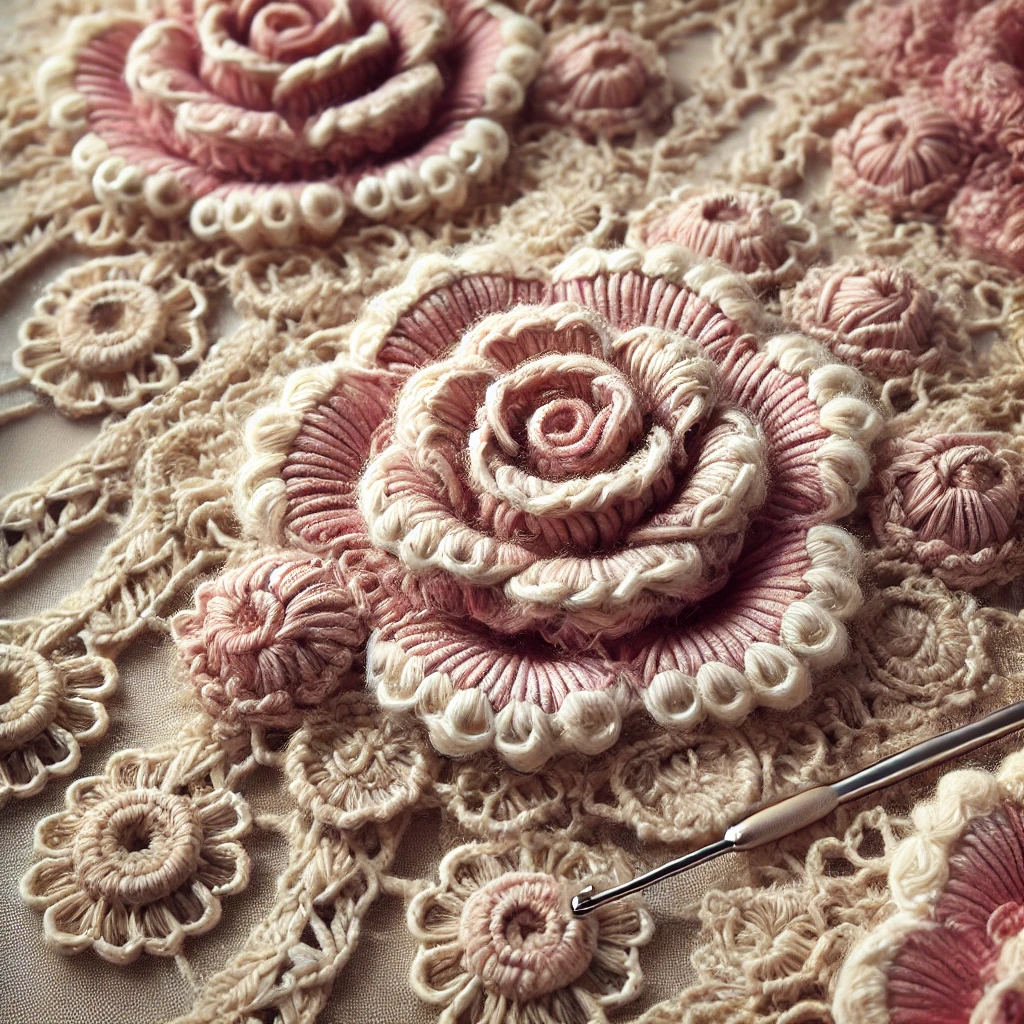
Weldon’s Practical Needlework, a famous Victorian crochet guide, gave us this beauty. Imagine creating tiny roses with crochet – raised, three-dimensional flowers right in your fabric. This stitch combines puff stitches and bullion stitches to make the petals, resulting in an incredibly intricate rose. It’s time-consuming and fiddly, but the result is pure Victorian elegance. As crochet became more practical and quicker, such decorative stitches faded from regular use.
6. Victorian Shellwork
If you’ve ever admired a vintage lace tablecloth, you’ve likely seen Victorian shellwork. These shells were layered with picots and chains, forming delicate, flowing designs. Back in the day, shell stitches weren’t just for edging – they were the star of the show in shawls and bedspreads. Today, we still use simpler shell patterns, but the rich detail and complexity of Victorian shellwork are largely a thing of the past.
7. Ripple Star Stitch
Do you love ripple patterns? This one’s a twist on the classic ripple, where each wave contains a star-shaped motif. It’s a bit more detailed than the ripple patterns you see today and was commonly used in mid-century afghans and blankets. While it creates a beautiful, textured effect, its complexity has made it less popular in modern times as simpler versions of ripple patterns have taken over.
8. Broomstick Lace
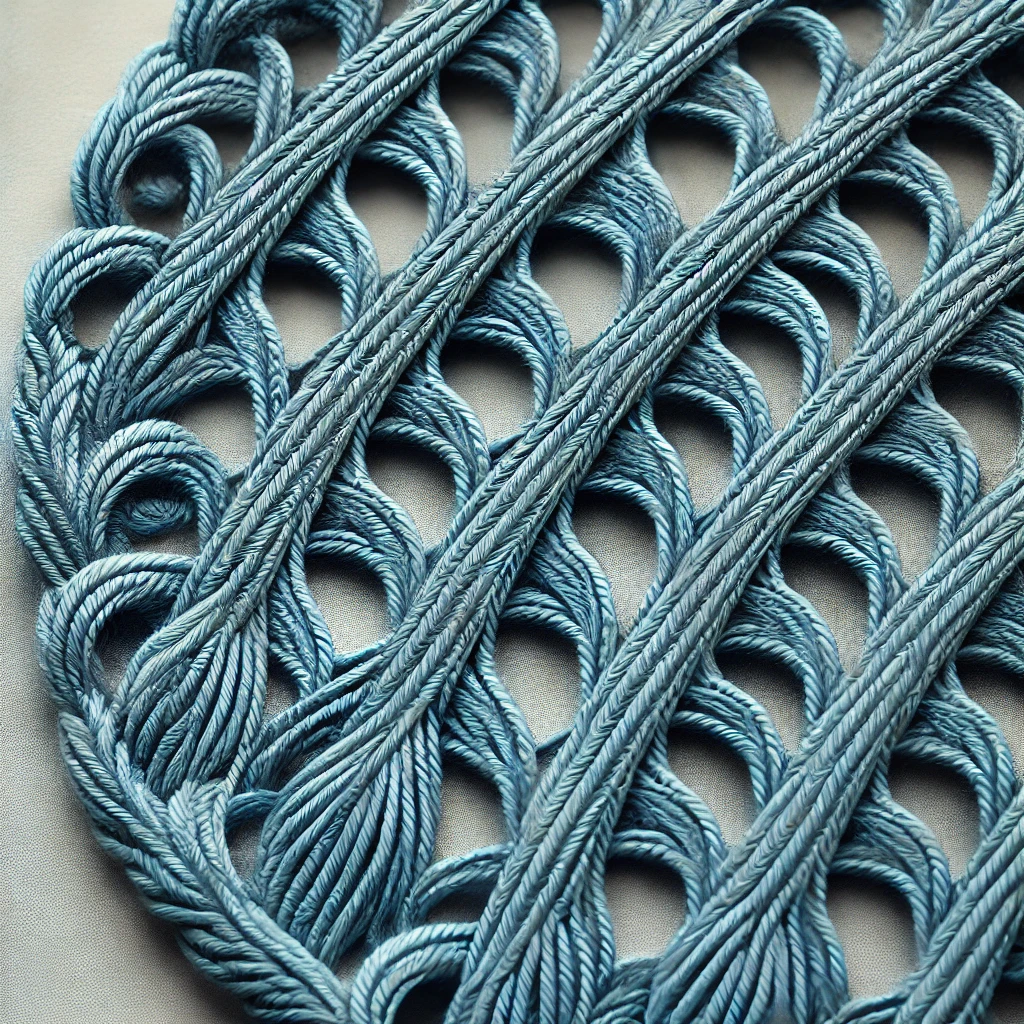
If you’ve ever heard of broomstick lace, you know it’s a real showstopper! Named after the large knitting needle or broomstick handle used to create it, this technique pulls loops of yarn onto the handle and then works them into crochet stitches, resulting in open, lacey designs. It’s absolutely stunning, but because it requires extra tools and a bit of practice, it’s not as common anymore. You might still come across it in specialty patterns, but it’s definitely a vintage vibe!
9. Pineapple Stitch
Ah, the pineapple stitch – a classic motif in vintage crochet. You’ve probably seen it in old doilies or tablecloths, where its airy, lacy look made it a favorite. Pineapples symbolized hospitality, which made them popular in home decor. While the stitch is still around in some form, the more complex, layered versions of it are a rarity now. It’s a little labor-intensive, but if you want to bring a bit of vintage charm to your work, this is the stitch to learn!
10. Irish Crochet Lace
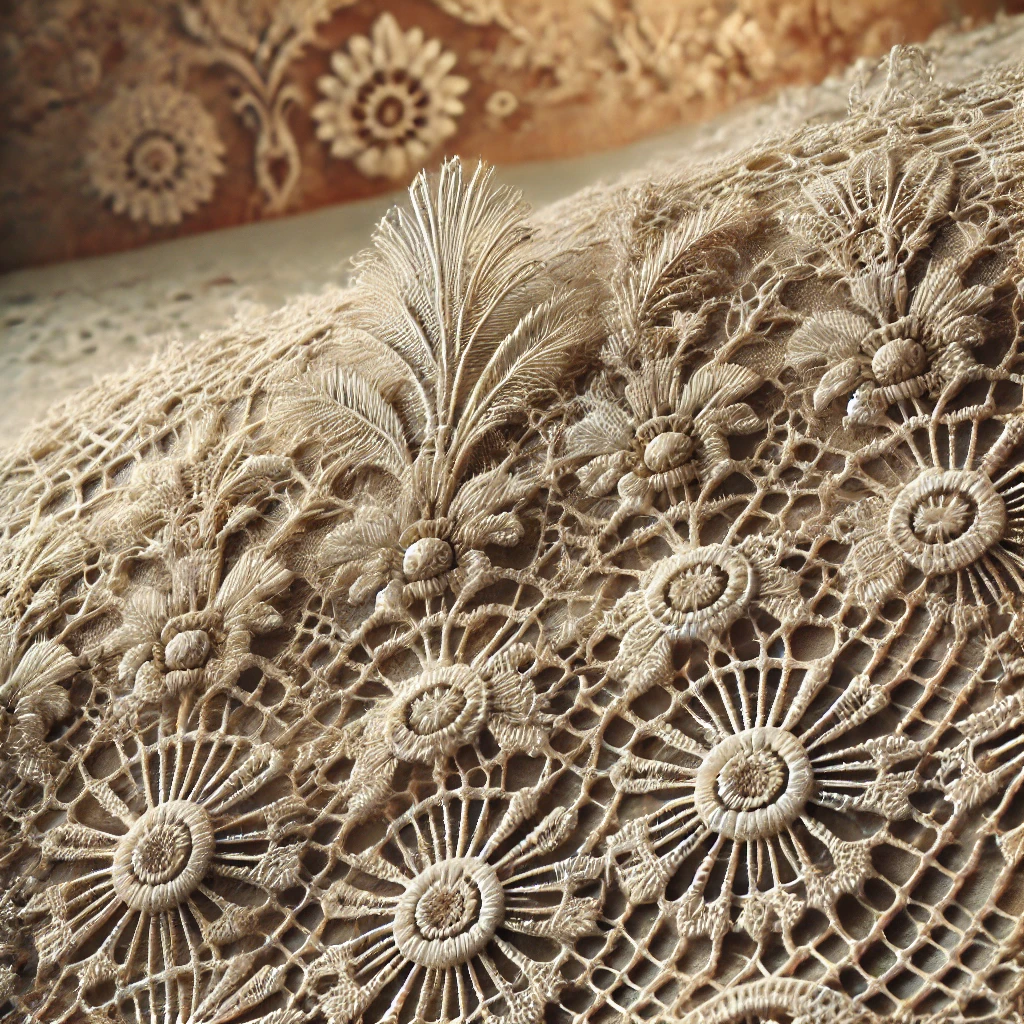
This one’s a real piece of history. During the Irish famine in the mid-19th century, Irish women turned to crochet to survive, making lace pieces to sell. The lace is made up of tiny motifs, like flowers and leaves, crocheted separately and then joined together. It’s incredibly delicate and requires a lot of skill – no wonder it was considered a luxury! Modern crochet has mostly moved on to quicker and less detailed methods, but Irish crochet remains a beautiful reminder of the craft’s past.
11. Popcorn and Picot Combination
For texture lovers, the popcorn and picot combo was a dream! This stitch adds dimension and an ornate finish to any project. The popcorn stitch creates little raised “pops” on the fabric, and picot stitches add tiny loops for extra detail. You’d see this stitch a lot in doilies and tablecloths back in the day, but modern crochet has shifted to simpler, cleaner lines, and this detailed, textured combination is now a rare sight.
Bringing these vintage stitches back into your projects can add a unique, handcrafted charm that connects you with crochet’s rich history. Whether you’re looking for a fun challenge or a way to add elegance to your next piece, these forgotten stitches are definitely worth a try!

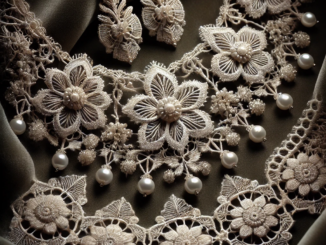
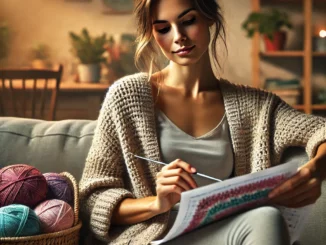
Be the first to comment